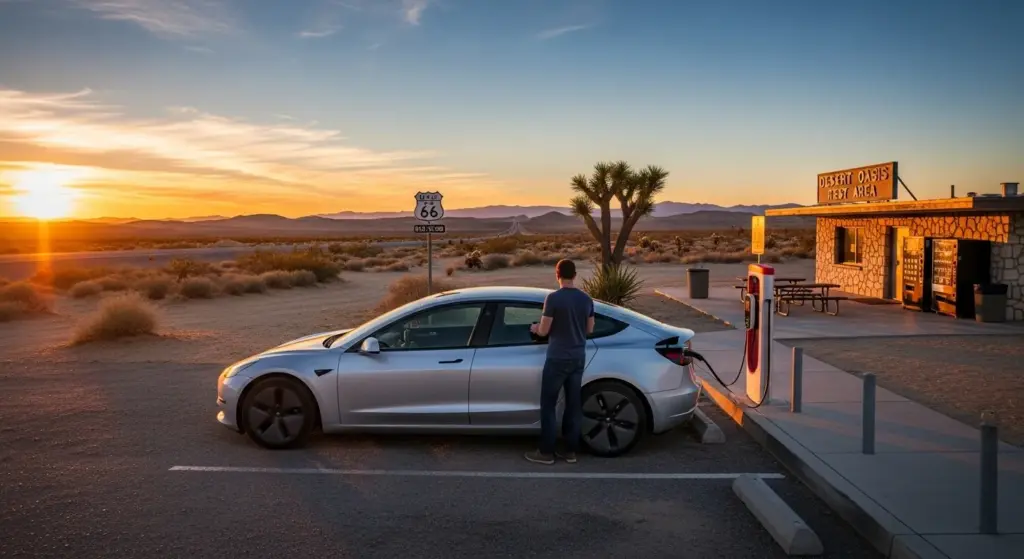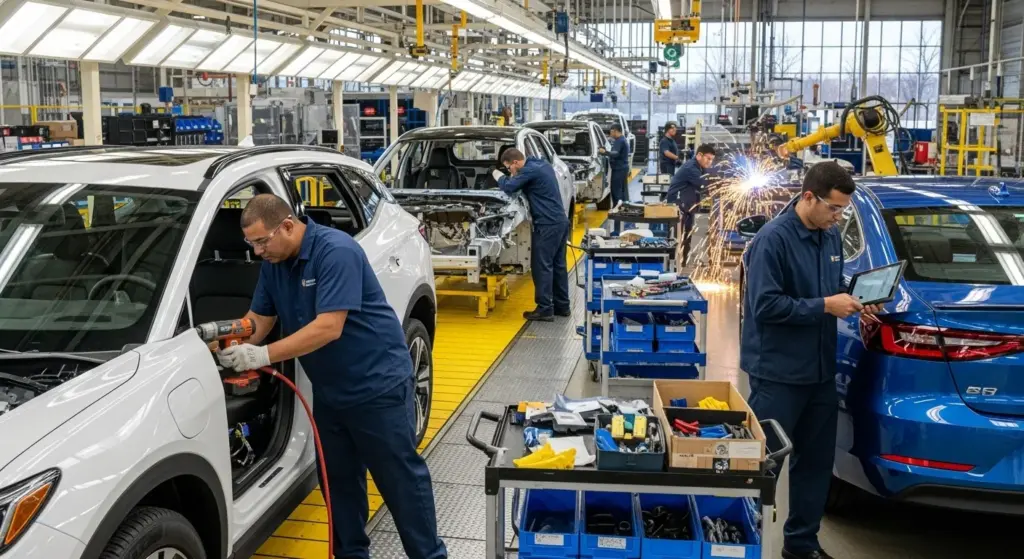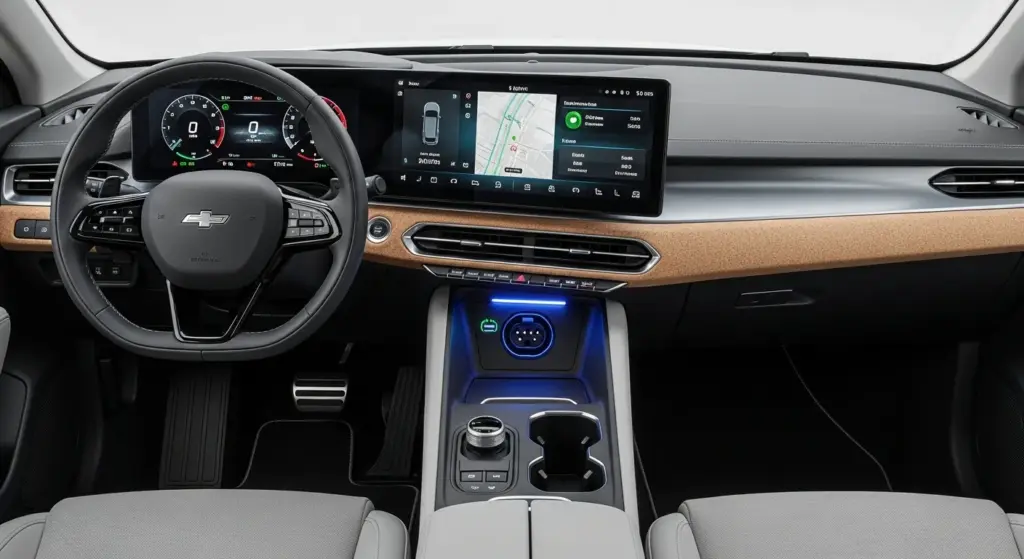When the $7,500 federal EV credit disappears in 2026, U.S. automakers will face their toughest test yet. No safety net, no incentives — just real market competition. Here’s what’s coming next.
The calm before the storm — and the clock’s ticking
I’ve been following the U.S. EV scene long enough to know one thing: subsidies have always been the silent stabilizer. They made electric cars feel just within reach, even for skeptical buyers. But as we roll toward 2026, that comfort zone is gone. The federal $7,500 EV tax credit — the one that helped Tesla, Ford, Rivian, and a dozen others move metal — is expiring.
And this time, there’s no extension in sight.
Automakers knew this day was coming, but few were ready for what it truly means: a free market test. No more cushion, no more help from Washington — just price tags, performance, and brand loyalty.
For buyers, it’s a reality check. For automakers, it’s a reckoning.

Please have a look at this article: 2025 Harley-Davidson Pan America 1250 Special — New Price, Smarter Suspension & Real Rider Appeal
“We built for incentives, not independence” — the industry’s wake-up call
Let’s be honest — the modern EV industry was built around those incentives. You could feel it in the way brands structured their prices. Ford’s F-150 Lightning, for instance, started with trims that just qualified for credits. Tesla tweaked Model Y pricing multiple times to stay eligible. Even luxury players like Mercedes and BMW rolled out “credit-friendly” versions of their EVs.
But that dance is over.
Starting in early 2026, I expect automakers to completely rethink their playbooks. Some are already reacting — Ford recently shaved nearly $4,000 off the Lightning’s base trim, and Hyundai went nuclear with discounts on the Ioniq 5, reportedly slashing nearly $10K to keep it competitive. Tesla, as usual, moved first — introducing a stripped-down, cheaper Model Y variant that undercuts everyone else.
This isn’t just a marketing strategy. It’s survival.
How this hits the street: pricing wars and product shakeups

Let’s picture it: you’re walking into a dealership in 2026. The sticker shock is real. That $50,000 EV suddenly feels $7,500 more expensive than it did last year — because, well, it is.
Manufacturers know this. That’s why the pricing war is already starting to heat up. Expect more “Standard Range” models, limited-run trims, and financing tricks (like 0% APR for 60 months) to cushion the blow.
Tesla will likely stay aggressive — they’ve got the margin and manufacturing efficiency to play hardball. Ford and GM? They’re tightening belts. I wouldn’t be surprised to see new hybrid variants sneak back into showrooms just to keep buyers in the family.
And here’s the wild part: some startup EV brands might not survive this transition at all. When the credit vanishes, so does their main sales pitch.
Inside the factory: when incentives disappear, plans change fast
Behind the glossy ads, automakers are rewriting their internal memos. Those massive EV battery factories that were planned across Michigan, Kentucky, and Texas? A few are already being “re-evaluated.”
Without the tax credit shaping supply chains, companies suddenly have more flexibility — but less financial motivation to keep building at full throttle.
Please have a look at this article: Bike Keeps Stalling at Idle? 7 Fixes Every Rider Should Know in 2025
I talked to one supplier source last month who said it bluntly: “We built for incentives, not independence.” Now, automakers are realizing how exposed they are without that safety net.
GM has reportedly slowed down EV production plans at several plants. Ford’s rethinking its sourcing strategies. Even Tesla — as lean as it runs — might delay a few upcoming trims to match demand more cautiously.
In short: 2026 will be a year of recalibration.
The product cull: fewer models, sharper focus
If you’re someone who loves niche EVs — the compact luxury crossovers, the experimental sedans — brace yourself. Automakers will start trimming the fat.
When sales get shaky, brands always double down on what sells: SUVs, trucks, and mainstream crossovers. I’m already hearing whispers that several low-volume models may get quietly discontinued after 2025. Acura’s ZDX EV might be on the chopping block; Nissan’s rumored EV sedan too.
In 2026, we’ll see a “hero model” era emerge — fewer vehicles, but ones built to dominate a segment. The ones that can’t stand on their own? Gone.
That’s not necessarily bad. It means buyers might get better quality, longer development cycles, and fewer half-baked releases. But it also means less experimentation.
Battery tech and cost control — the next battlefield

Here’s where the real game will be won: battery economics.
Without subsidies, automakers must make EVs affordable through genuine efficiency — not government math. Tesla’s vertical integration gives it an edge. GM’s Ultium platform still needs to hit cost parity. Ford is pushing its LFP battery strategy hard to lower per-kWh costs.
If there’s one silver lining here, it’s innovation pressure. Automakers now have to earn their affordability. Expect breakthroughs in solid-state testing, recycled materials, and charging tech — because they’ll have no choice.
By late 2026, you’ll start hearing brands talk less about “range” and more about “ownership cost.” Whoever wins that narrative will own the decade.
The dealership trenches: real-world reactions
I called a few dealers in the Midwest last week — the mood was cautious. Without the credit, order books for 2026 EVs are thinner. Some are already pushing plug-in hybrids again, seeing them as the safer bet for suburban buyers.
But there’s also optimism. “Once people drive them,” one Ford dealer told me, “they realize they’re just better cars. Incentives or not, they’ll sell.”
That’s the interesting part — brand trust will matter more than ever. Buyers will remember which companies stood behind their products when the discounts disappeared.
Imagine cruising through Arizona in a 2026 Lightning or Cybertruck, knowing you didn’t buy it for a rebate — you bought it because it was actually worth it. That’s what this transition is about.
⚙️ Quick Spec Glance — 2026 Ford F-150 Lightning (Example)
| Feature | 2026 STX Trim (Post-Credit Update) | Real-World Impact |
|---|---|---|
| Battery | 123 kWh pack | ~290 miles EPA range; solid for long commutes |
| Charging | 150 kW DC fast charge | ~70–100 miles in 30 minutes |
| Power | ~580 lb-ft torque | Plenty for towing or highway passing |
| Price | Starts around $63,000 | Down ~$4,000 from 2025 trims |
| Features | Off-road kit, rugged tires, extended cab | Aimed at adventure and rural buyers |
It’s clear Ford’s chasing affordability through trims and hardware instead of incentives. And that’s the playbook others will follow.
What it means for buyers like us
So what should you do if you’re planning to buy an EV in 2026?
First, watch the early-year discounts. Automakers will move leftover 2025 inventory aggressively to keep momentum.
Second, don’t panic about range or price. Technology will keep improving even as credits fade.
Third, look at used EVs — that market’s about to explode with trade-ins and lease returns.
And finally, support the brands that innovate their way through this. Those are the ones that will still be around in 2030.
Wrapping up — the end of the safety net, the start of real competition
2026 will mark a line in the sand for American carmakers. The end of EV subsidies isn’t a death sentence — it’s a challenge.
If anything, it’ll separate those who needed government help from those who can thrive without it.
As someone who’s covered this space for years, I actually welcome it. Because now, every mile, every battery cell, and every dollar spent will finally mean something.
It’s going to be a fascinating ride — and I, for one, can’t wait to see who makes it through.
